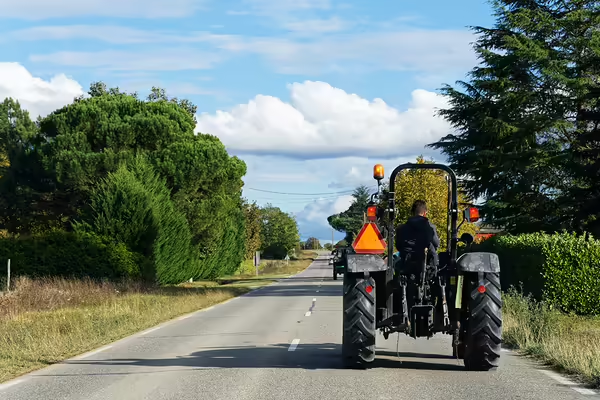
URBANA, Ill. — Current spring weather conditions have a lot of tractors parked for now, but when the weather clears and fields dry, it will be a fast-paced season for planting 2024 statewide.
Although another Midwest farming season may seem routine, the agriculture industry is highly prone to risks, accidents, severe injury, and death. It is important for those driving the tractors and those following behind them to be aware of their surroundings and leave plenty of room for safety.
From sharing the roadways to working on a broken-down planter, there are many risks for accidents and injury. University of Illinois Extension encourages incorporating extra safety measures into these routine tasks to help decrease the chances of accidents this spring.
“Planting season is a fast-paced, high-pressure time for farmers, workers, operators, and their families,” says Salah Issa, assistant professor and Extension specialist in the Department of Agricultural and Biological Engineering in the College of Agricultural, Consumer and Environmental Sciences. “Incorporating safety measures in established routines can assist in decreasing accidents and injuries while still focusing on getting the crop into the ground in a timely manner.”
Today’s farm equipment is very large, and it can take up a lot of the availability of the roadways, especially in rural areas where the opportunity to meet a tractor is higher. Some safety planning steps for farmers and operators include:
- Move equipment at times when there is less traffic.
- Use hazard lights, active turn signals, all mirrors, and add reflective tape.
- Place slow-moving vehicle signage on equipment in a clear and clean location.
- Drive on mapped-out routes from fields typically containing less traffic and identify areas where the equipment can be pulled over safely.
- Avoid distractions like cell phones and radios.
For drivers who encounter moving farm equipment, steps to take include:
- Slow down when approaching farm equipment.
- Allow extra time for travel or take alternate routes to destinations in rural areas during farming seasons.
- Avoid blind spots and assumptions that the equipment operators can see all vehicles on the road.
- Use patience, distancing, and awareness before passing.
- Watch for hazard lights and turn signals before making lane moves or passing.
Lives on and off the farm can be saved by making time and incorporating simple safety measures into daily routines.
For more on current ag safety research and programs available, visit Illinois Extension at extension.illinois.edu.
SOURCE: Doug Gucker, local foods and small farms educator, Illinois Extension; Salah Issa, assistant professor and Extension specialist in the Department of Agricultural and Biological Engineering in the College of ACES.
WRITER: Jenna Braasch, media communications coordinator, Illinois Extension
Illinois Extension leads public outreach for University of Illinois by translating research into action plans that allow Illinois families, businesses, and community leaders to solve problems, make informed decisions, and adapt to changes and opportunities. Illinois Extension is part of the University of Illinois Urbana-Champaign College of Agricultural, Consumer and Environmental Sciences.